Bridge on a slight curve...
|
I've got a single-span through-truss bridge where the track is slightly curved. The bridge will of course be straight (just a bit wider than normal).
But I'm not sure how to do the bridge ties and outside (wood) guards. Curved to follow the track, or straight to follow the bridge edges? Thanks, Jeff. |
|
If the bridge stringers are to be straight, I'd vote for ties perpendicular to the stringers with straight guard rail, but that's just me.
Jim Courtney
Poulsbo, WA |
|
In reply to this post by Jeff Young
Here are a few views of a pair of Sn3 single span trestles on curves, based on the RGS bridges on the Ilium wye. Scenery was never finished on the module, as my interest turned back to the C&S:
   When the abutment panels were skewed relative to the stringers, based on a couple of prototype photos, the ties were beveled to fit and support the guard rails. The stringers were 24 feet long, and due to the length of the spans were heavier than the typical (16 foot) trestle stringer. Track radius on the curved legs of the modeled wye was 28" in S scale, equivalent to 21" in HO scale. My C-class engines didn't have any problems with the curves. BTW, Happy Thanksgiving!
Jim Courtney
Poulsbo, WA |
|
This post was updated on .
In reply to this post by Jeff Young
Jeff,
only the Rails are curved, the deck panels are a series of tangents the length of the stringers, the only deviation I've ever seen to this was the deck of the Colorado Midland trestle at Hagerman, and that may have been to do with the wider radius of the curve and SG.  http://digital.denverlibrary.org/cdm/fullbrowser/collection/p15330coll22/id/39155/rv/singleitem/rec/67  http://digital.denverlibrary.org/cdm/fullbrowser/collection/p15330coll22/id/90656/rv/singleitem 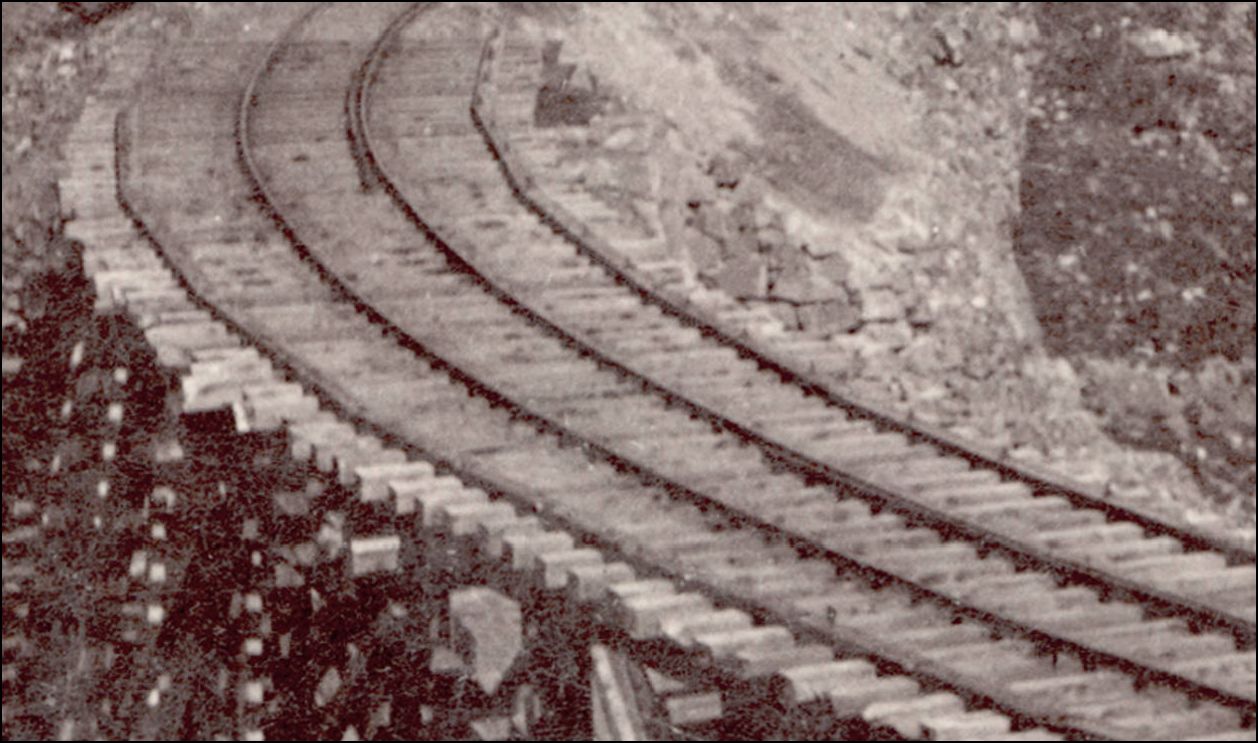 http://digital.denverlibrary.org/cdm/fullbrowser/collection/p15330coll22/id/69910/rv/singleitem/rec/7 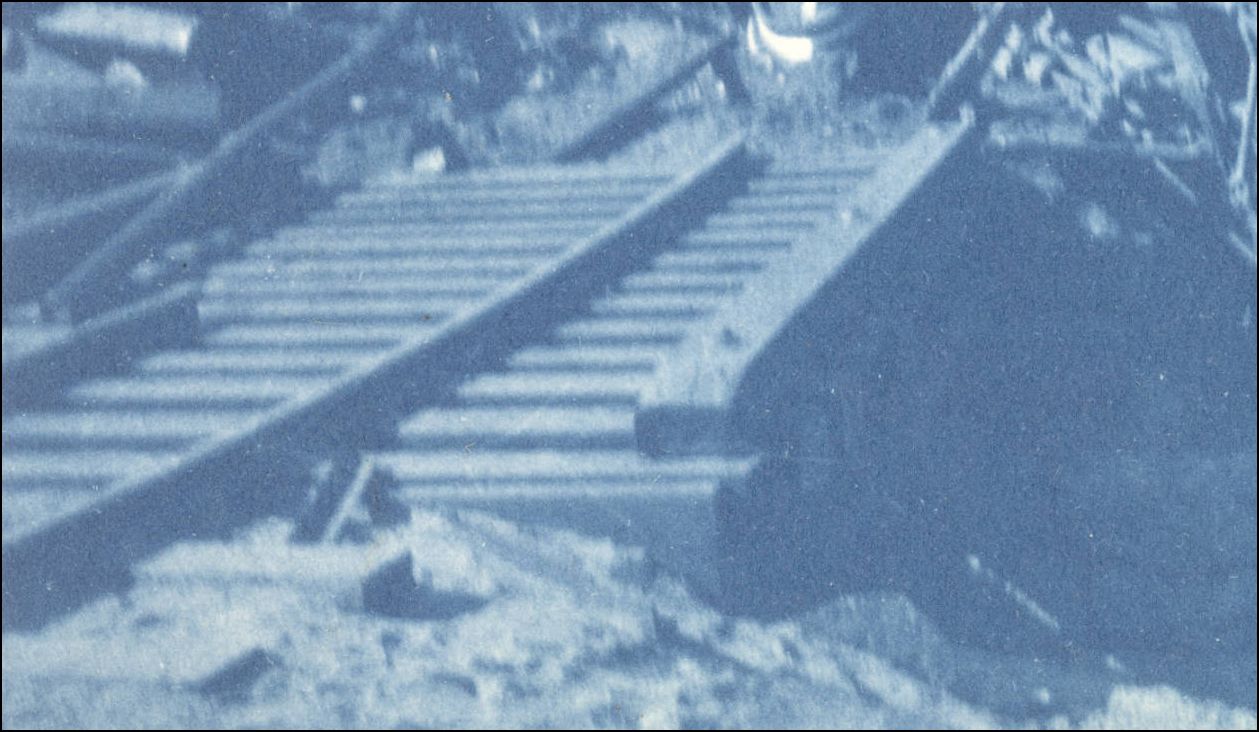 http://cdm16079.contentdm.oclc.org/cdm/fullbrowser/collection/p15330coll22/id/72060/rv/singleitem/rec/6 Be sure to check your Trestle Standards for Stringer length, the C&S had differences from the Grande/RGS and keep in mind, a lot of modellers mistakenly scribe a joint directly over each and every Bent.  http://cdm16079.contentdm.oclc.org/cdm/fullbrowser/collection/p15330coll22/id/10322/rv/singleitem Unless the curve is very sharp, the Stringer should carry over one bent without a joint, the inner stringer being staggered so as to create the strongest possible joint. The Gregory Street Bridge is the only example I can show you of this.  http://digital.denverlibrary.org/cdm/fullbrowser/collection/p15330coll22/id/78555/rv/singleitem/rec/44
UpSideDownC
in New Zealand |
|
Thanks, Chris and Jim.
It’s actually a through-truss bridge rather than a trestle, but I think the examples are still elucidatory. (Wow. I don’t think I’ve ever gotten to use that word before.) Cheers, Jeff. (And happy Thanksgiving, everyone.) |
 Thusly I shall elucidate ... Thusly I shall elucidate ...
Given that this is "Modern" practice, it should still mirror the C&S application, there were very few curved applications on the C&S, it certainly is similar to NZR standards as what I'm used to. Note that the Trackdeck is straight parallel with the Truss members but given the short length why wouldn't it be. 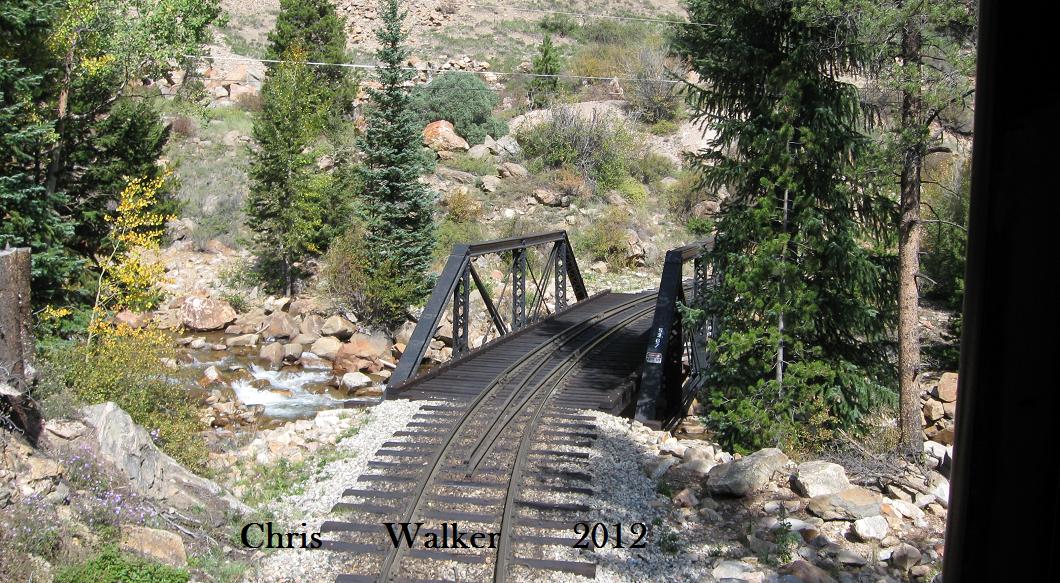 However that was not the case on the C&S with the through Plate Girder on the Georgetown Loop, here it is clearly a 3 tangent Trackdeck structure inside the straight Plate Girders. My own photo of the modern version at this location is from the Hwy 70 overlook and the detail not that great. 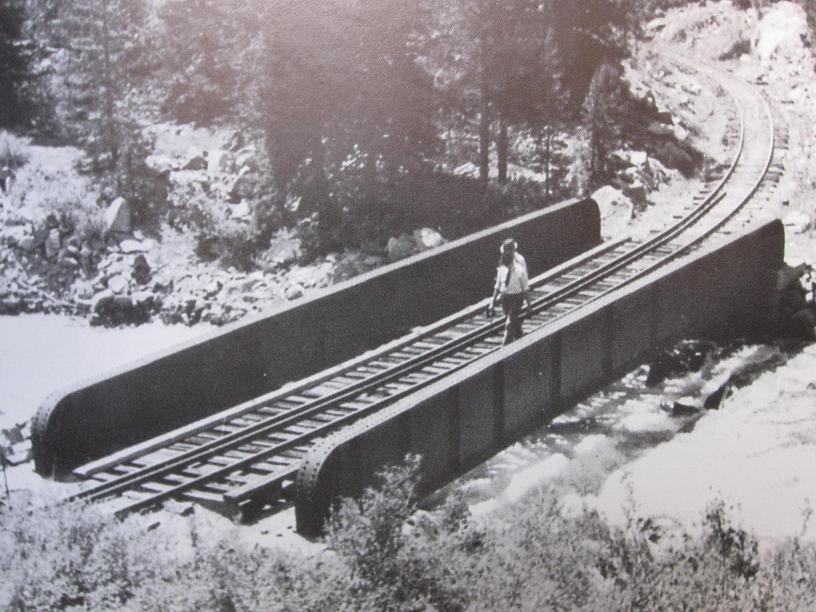 from pg377 Colorado Central Rail Road Abbott/ McLeod Sundance Books 2007
UpSideDownC
in New Zealand |
|
Very interesting. That Georgetown bridge is very similar in both length and curvature to what I have. And I kind of like the larger gaps you get that way between the track deck and the bridge sides….
I do have a trestle coming up in the not-too-distant future. Looking at the closeups Chris posted (both Morrison and Blackhawk), the stringer joints appear to be butt joints. I would have expected half-laps; did they really always use butt joints? Thanks again, Jeff. |
|
D&RG standard trestle plans are on the net, here's one that details the stringers http://www.drgw.net/gallery/d/27937-2/drgw_standardplans_p183.png
As I said C&S differed in their standards as to number and size but the carpentry is still the same....and yes, butt joints work OK. My curved four panel trestle on my 18" ga tramway here has been standing for 5 years now and still has no bolts in it yet, the stringers just sit on top of the caps, no X-bracing between the bents yet either, only the rails hold it together...and has stood through 5 or more quakes all over 5.5  yeah I know...... yeah I know......
UpSideDownC
in New Zealand |
|
In reply to this post by Jeff Young
I had thought about adding to the trestle examples above, this one that is visually rather neat...here for your enjoyment
 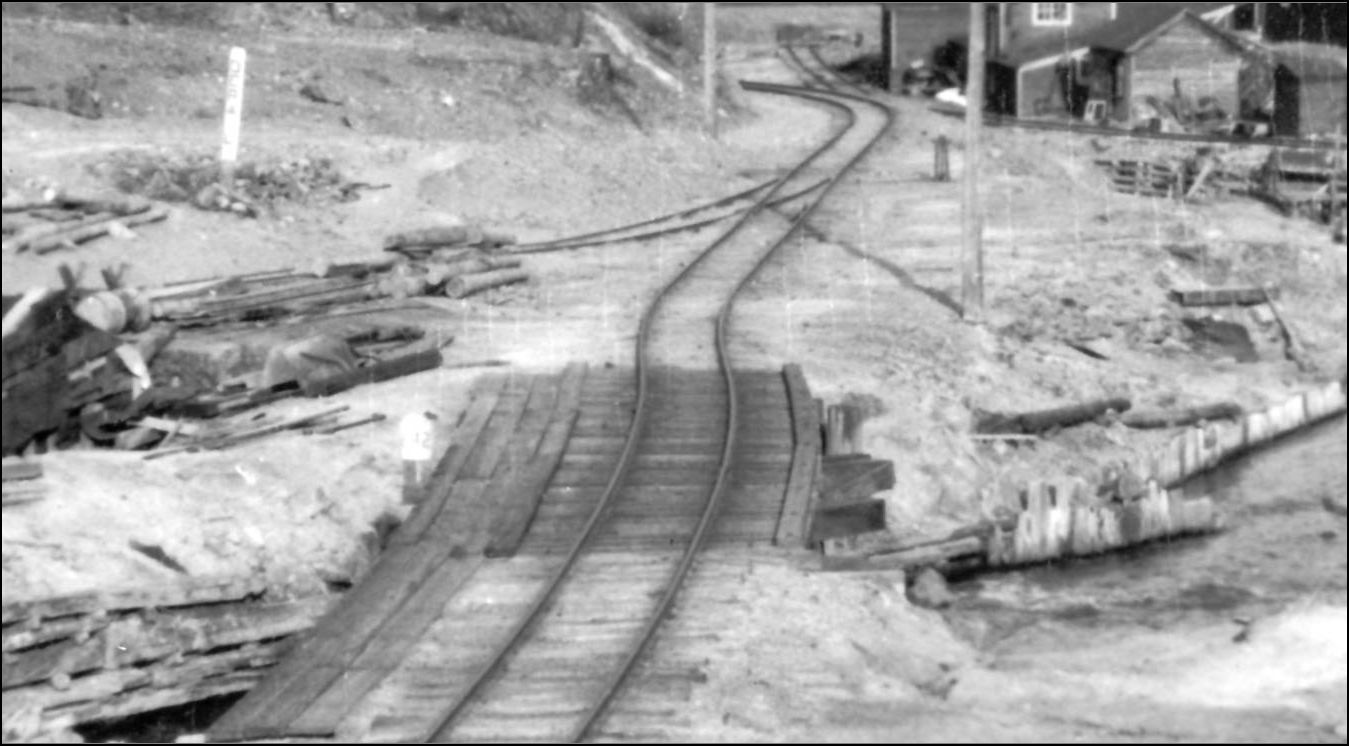 http://cdm16079.contentdm.oclc.org/cdm/fullbrowser/collection/p15330coll22/id/36598/rv/singleitem/rec/99
UpSideDownC
in New Zealand |
|
In reply to this post by Chris Walker
Jeff, don't forget the C&S standard trestle plans which Jim scanned.
Engineers don't know what to do with curves, so they figure out ways to accommodate the curves with small, straight spans. Where you have a through truss or girder, the side elements will be spaced far enough apart to provide clearance on the curve. (Want a circular skylight? It will get framed as a square, or if large enough, an octagon.) Chris is correct, the triple beam under the bridge ties should extend across two spans for continuity. On my abuilding Indiana Gulch trestle I intended to duplicate this feature, but even a 36" radius is too tight to model this feature at scale. Oh well. I am also digging the bridge MP indicators, a neat feature to model regardless of era.
Keith Hayes
Leadville in Sn3 |
«
Return to C&Sng Discussion Forum
|
1 view|%1 views
| Free forum by Nabble | Edit this page |

